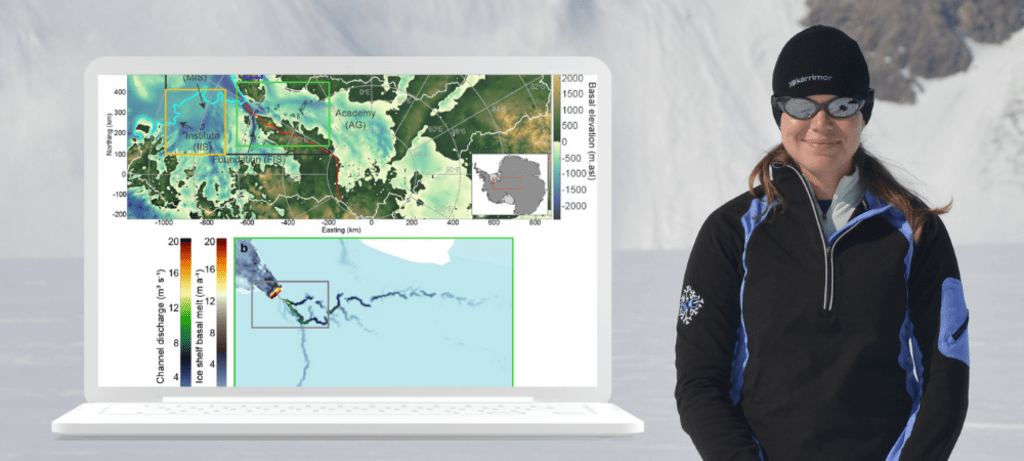January 2025
High-Porosity, Layered Iridium Oxide as an Efficient, Durable Anode Catalyst for Water Splitting - co-authored by Yimin A. Wu
Global, regional, and national age-sex-specific burden of diarrhoeal diseases, their risk factors, and aetiologies, 1990–2021, for 204 countries and territories: a systematic analysis for the Global Burden of Disease Study 2021 - co-authored by Zahid Butt
Evaluating manganese removal in groundwater using pilot scale biofilters: The role of filter media characteristics during start-up - co-authored by Brian Kendall
Co-producing new knowledge systems for resilient and just coastal cities: A social-ecological-technological systems framework for data visualization - co-authored by Mathieu Feagan
Inequities blocking the path to circular economies: A bio-inspired network-based approach for assessing the sustainability of the global trade of waste metals - co-authored by Simron Singh
Honeycomb-Structured IrOx Foam Platelets as the Building Block of Anode Catalyst Layer in PEM Water Electrolyzer - co-authored by Yimin A. Wu
Eco-friendly strategic decision-making towards grid modernization with fully renewable water and power community hubs - co-authored by Ali Elkamel
Observation of Temperature Dependent Atomic Off-Centering in High Entropy Cubic I-V-VI2/IV-VI Alloys with Ultralow Thermal Conductivity - co-authored by Yimin A. Wu
Inclusive mapping of sustainable finance and accounting: a bibliometric review - co-authored by Olaf Weber
Food Allergy Genetics and Epigenetics: A Review of Genome-Wide Association Studies - co-authored by Susan J. Elliott and Amelia Clarke
Nutrition biomarker assessment and exploration of the role of country foods to improve food security in the Sahtú Region, Canada - co-authored by Kelly Skinner
The long multiphase trunk–tributary surge history of the high-Arctic Chapman Glacier, 1959–2023 - co-authored by Wesley Van Wychen
Land Snow Surface Temperature Estimation Using an Optimized Near Real-Time Passive Microwave Algorithm - co-authored by Richard Kelly
Environmental Catalysis for NOx Reduction by Manipulating the Dynamic Coordination Environment of Active Sites - co-authored by Yimin A. Wu
Transition-Metal-Doped CeO2 for the Reverse Water-Gas Shift Reaction: An Experimental and Theoretical Study on CO2 Adsorption and Surface Vacancy Effects - co-authored by David Simakov
Who is consuming ultra-processed food in Canada? A cross-sectional analysis of the 2018/2019 International Food Policy Study - co-authored by Sharon Kirkpatrick
Cost benefit analysis of grid-based electrolytic ammonia production across Canadian provinces - co-authored by XiaoYu Wu
A systematic scoping review of the collaborative governance of environmental and cultural flows - co-authored by Kelsey Leonard
Enhanced Urea Oxidation Reaction Through Layered Double Hydroxides: Insights From ZIF-67-Derived Nanostructures - co-authored by Joyce Kim, Anna Klinkova, and Joyce Kim
LVP: Leverage Virtual Points in Multimodal Early Fusion for 3-D Object Detection - co-authored by Jonathan Li
Adoption determinants and policy tools for residential green stormwater infrastructure: A review synthesizing differences and commonalities among lot-level practices - co-authored by Dawn Parker and Michael Drescher
Benchmarking of snow water equivalent (SWE) products based on outcomes of the SnowPEx+ Intercomparison Project - co-authored by Chris Derksen
Climate-denying rumor propagation in a coupled socio-climate model: Impact on average global temperature - co-authored by Chris Bauch
Reactive Robot Navigation Using Quasi-Conformal Mappings and Control Barrier Functions - co-authored by Gennaro Notomista
Investigating how patients with lupus nephritis access and trust health information: Results from a Canadian survey of patients with lupus nephritis - co-authored by Susan J. Elliott
Antarctic Wide Subglacial Hydrology Modeling - co-authored by Christine Dow
Teaching climate change planning: fostering hope while building capacity - co-authored by Mark Seasons
Knowledge mobilization, wildfire risk, and sustainable tourism in UNESCO biosphere reserves - co-authored by Brent Doberstein
Direct Ink Writing of Conductive Hydrogels - co-authored by Eric Croiset
Identifying viable financing mechanisms for post-earthquake housing reconstruction in Canada: Case study of a M7 earthquake in British Columbia - co-authored by Rodrigo Costa
Multi-scale multi-task neural network combined with transfer learning for accurate determination of the ash content of industrial coal flotation concentrate - co-authored by Chao Tan
A First Assessment of Greenhouse Gas Emissions From Agricultural Peatlands in Canada: Evaluation of Climate Change Mitigation Potential - co-authored by Maria Strack
Multimodal Sensor Fusion for Daily Living Activity Recognition in Active Assisted Living for Older Adults - co-authored by Plinio Pelegrini Morita

